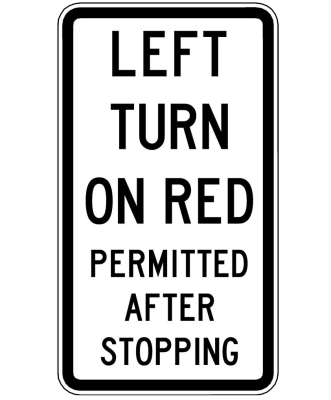Traffic lights
Traffic lights regulate traffic flow and make intersections safer for drivers, pedestrians and other road users. You must always obey traffic lights on NSW roads.
Stopping at traffic lights
Red light
A red light means you must stop. You must stop as close as possible behind the ‘Stop’ line.

Yellow (amber) light
A yellow (amber) light means you must stop. You can only go through a yellow light if you cannot stop safely before the ‘Stop’ line.
You should not stop suddenly, and you should not speed up to get through a yellow light.

Green light
A green light means you can go through the intersection if it’s safe to do so.
You must also follow these rules for temporary traffic lights at roadworks.

Turn signals
Some traffic lights have arrows to control traffic turning right or left.
Red arrow
A red arrow means you must not turn. You must stop behind the ‘Stop’ line until the arrow turns green or disappears.

Green arrow
A green arrow means you can turn in that direction.

Yellow (amber) arrow
A yellow (amber) arrow means you must stop. You can only go through a yellow light if you cannot stop safely before the ‘Stop’ line.
When a yellow (amber) arrow is flashing, this means you can turn in that direction. You must give way to pedestrians crossing the road you’re turning into.

See Turning left and right for rules for turning when there are no signals.
Turning left on a red light
When you see this sign at traffic lights, you must stop at the red light, and then turn left when it’s clear. When turning, you must give way to traffic approaching from the right.

Turning right at traffic lights
When there’s a green traffic light but no right arrow signal, wait until oncoming traffic clears or breaks, and then turn.
If the lights change to yellow or red while you’re in the intersection, you must turn right as soon as it’s safe to do so.
You must not make a U-turn at traffic lights, unless there’s a ‘U-turn permitted’ sign.

Signals for other vehicles
Buses
Some traffic lights have a ‘B’ signal for buses driving in a bus lane or bus-only lane. The ‘B’ signal is usually white on a black background (some traffic lights also have red and yellow ‘B’ signals).
When the ‘B’ signal lights up, only buses can go through the intersection. This signal lights up shortly before the usual traffic lights change.
When the ‘B’ signal turns red or yellow, buses must stop at the intersection.

Trams (light rail)
Some traffic lights have a ‘T’ signal for trams. The ‘T’ signal is usually white on a black background.
When the ‘T’ signal lights up, only trams can go through the intersection.
When the ‘T’ signal turns red or yellow, the tram must stop or prepare to stop.

Bicycle riders
Some traffic lights have bicycle signals for bicycle riders. These signals are used where bicycles are allowed to ride across a pedestrian crossing and also at some intersections.

When the ‘Bicycle’ symbol turns green, bicycle riders can go through the crossing or intersection. They must stop when the ‘Bicycle’ symbol turns red.

Vehicles must not stop in the area reserved for bicycles at traffic lights (bicycle storage area).

Pedestrian signals
Most traffic lights have areas where pedestrians can cross. Red and green pedestrian symbols or lights show them when to cross. Pedestrians must follow these signals.
Some signals have pedestrian countdown timers which show how many seconds a pedestrian has left to cross the road.
When you’re turning at an intersection, you must give way to pedestrians crossing the road that you’re turning into. Even if the pedestrian symbols or lights are flashing red, you must give way to any pedestrians still crossing.
You must also stop for pedestrians crossing at a pelican crossing.





Red-light speed cameras
Red-light speed cameras detect both red light and speeding offences at high-risk intersections.
The camera detects your vehicle if you cross over the ‘Stop’ line or enter the intersection after the traffic light has turned red.
The camera also detects your vehicle if you go over the speed limit at any time, whether the traffic light is red, amber or green.
See Speed limits to find out more about the rules and penalties for speeding.